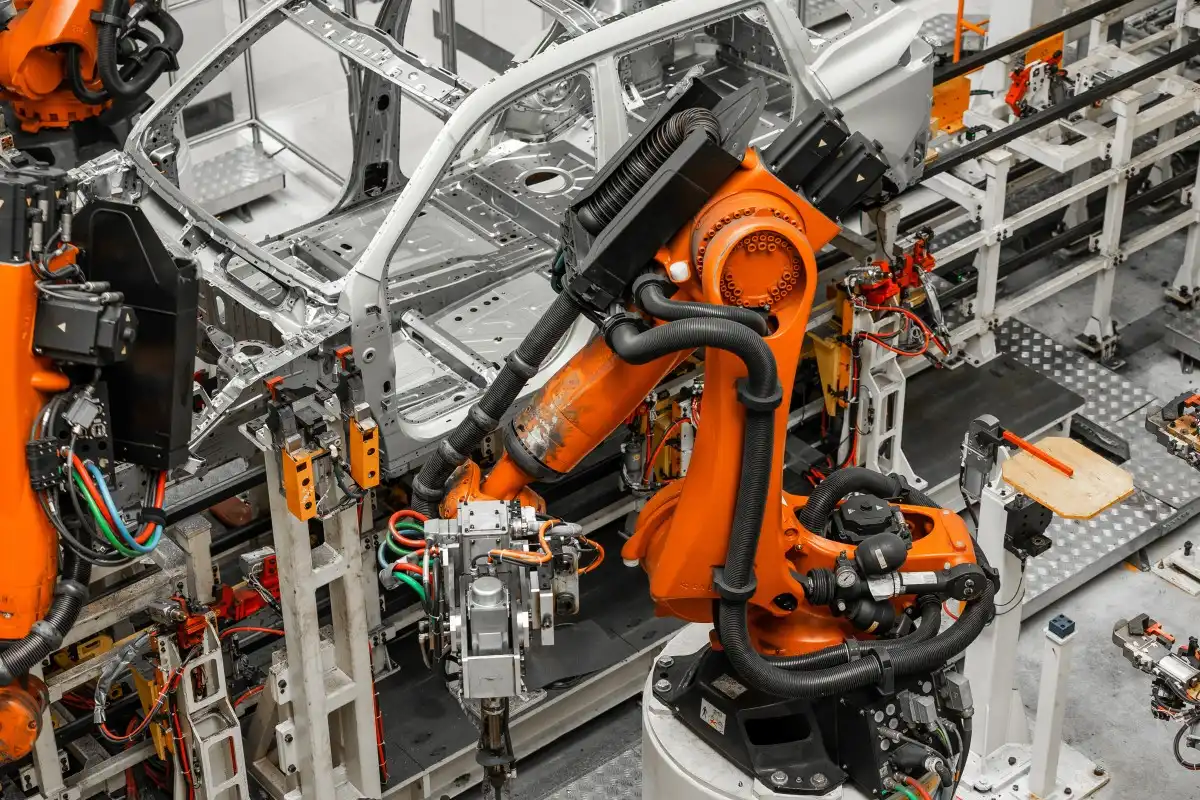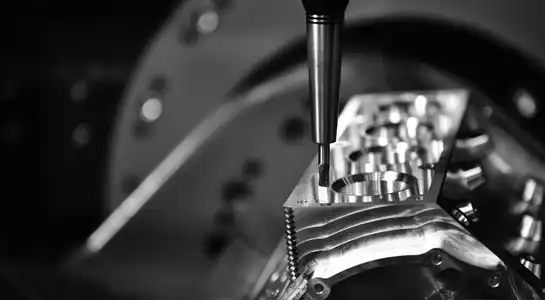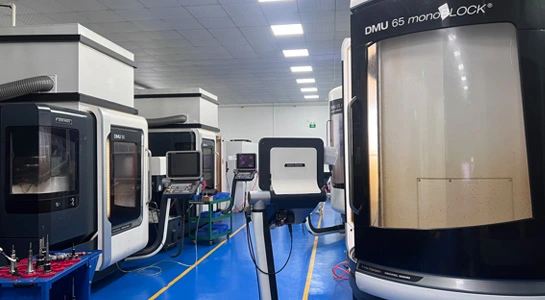Structural Aerospace Components
Fuselage and Airframe
The fuselage is the main body of an aircraft, serving as the central structure to which other components are attached. It houses the cockpit, passenger compartment, and cargo hold. Modern fuselages are designed to be lightweight yet strong, often utilizing advanced composite materials. The airframe encompasses the fuselage, wings, and tail assembly, forming the skeleton of the aircraft. Engineers strive to create airframes that balance strength, weight, and aerodynamics to achieve optimal performance.
Wings and Control Surfaces
Wings are critical aerospace components that generate lift, allowing aircraft to fly. They come in various shapes and sizes, depending on the aircraft's purpose. Control surfaces, such as ailerons, flaps, and spoilers, are integrated into the wings to manipulate airflow and control the aircraft's movement. These components require precise manufacturing to ensure smooth operation and efficient aerodynamics.
Empennage and Stabilizers
The empennage, or tail section, includes the vertical and horizontal stabilizers. These components provide stability and control during flight. The vertical stabilizer helps maintain directional stability, while the horizontal stabilizer assists with pitch control. Elevators and rudders attached to these surfaces allow pilots to make precise adjustments during flight. Aerospace engineers must carefully design and manufacture these components to ensure proper balance and control.

Propulsion and Power Systems
Jet Engines and Turbines
Jet engines are the powerhouses of modern aviation. These complex machines generate enormous thrust by compressing air, mixing it with fuel, and igniting the mixture. Turbofan engines, commonly used in commercial aircraft, feature large fan blades that improve efficiency. Turbine components, such as compressor and turbine blades, must withstand extreme temperatures and pressures. Manufacturing these parts requires advanced materials and precision machining techniques.
Propellers and Rotors
Propellers and rotors are essential aerospace components for propeller-driven aircraft and helicopters. These components convert engine power into thrust or lift. Modern propellers often feature composite materials and variable-pitch designs for improved efficiency. Rotor systems in helicopters are particularly complex, with main and tail rotors working in tandem to provide lift and control. The manufacturing of these components demands strict tolerances and balance to ensure safe and efficient operation.
Fuel Systems and Tanks
Fuel systems in aerospace applications must be reliable, efficient, and lightweight. Fuel tanks are integrated into the wings and fuselage, requiring careful design to maximize capacity while maintaining structural integrity. Advanced fuel delivery systems ensure proper fuel flow and pressure under varying flight conditions. The manufacturing of fuel system components involves precision welding, sealing, and testing to prevent leaks and ensure safety.
Avionics and Control Systems
Flight Control Computers
Flight control computers serve as the central nervous system of modern aircraft, interpreting pilot commands and sensor data to manage flight surfaces, engine parameters, and onboard systems. Their development requires advanced electronics manufacturing, precise programming, and exhaustive testing to guarantee reliability under all operating conditions. Redundancy and fault-tolerant design are critical to prevent failures during flight. Manufacturers must also adhere to rigorous aerospace standards, ensuring that each computer functions flawlessly, maintaining aircraft stability, safety, and performance in both routine operations and emergency scenarios.
Navigation and Communication Equipment
Navigation and communication systems are essential aerospace components for safe and efficient flight operations. Navigation equipment, including GPS, inertial navigation systems, and radio aids, ensures accurate positioning, while communication devices allow pilots to maintain constant contact with air traffic control and other aircraft. These components are designed to withstand extreme environmental conditions, including temperature fluctuations, vibration, and electromagnetic interference. Manufacturers must follow stringent aviation regulations and certifications, guaranteeing compatibility, durability, and reliability across various aircraft platforms and operational scenarios.
Sensors and Monitoring Systems
Aerospace relies on a wide range of sensors and monitoring systems to track engine performance, structural integrity, cabin conditions, and environmental factors. These systems provide critical data for safe flight, predictive maintenance, and operational efficiency. Manufacturing these sensors requires precision engineering, miniaturization, and robust materials to endure harsh flight conditions. Advanced monitoring solutions increasingly incorporate artificial intelligence and machine learning to analyze real-time data, identify anomalies, and predict maintenance needs, ensuring proactive management of aircraft systems and enhancing overall safety and reliability.

Conclusion
The world of aerospace components is vast and complex, encompassing a wide range of parts that work together to make flight possible. From structural elements like fuselages and wings to sophisticated avionics systems, each component plays a crucial role in the performance and safety of aircraft and spacecraft. As technology advances, aerospace manufacturers continue to push the boundaries of materials science and engineering to create lighter, stronger, and more efficient components. Understanding these various types of aerospace parts is essential for anyone involved in the industry, from designers and engineers to maintenance technicians and enthusiasts.
FAQs
What are the main challenges in manufacturing aerospace components?
The main challenges include achieving tight tolerances, using advanced materials, ensuring reliability under extreme conditions, and meeting strict regulatory standards.
How are aerospace components tested for quality and safety?
Aerospace components undergo rigorous testing, including non-destructive testing, stress tests, environmental simulations, and flight tests to ensure they meet safety and performance standards.
What role does 3D printing play in aerospace component manufacturing?
3D printing, or additive manufacturing, is increasingly used for prototyping and producing complex aerospace parts, offering benefits like weight reduction and design flexibility.
Expert Aerospace Component Manufacturing | BOEN
At BOEN Prototype, we specialize in manufacturing high-quality aerospace components using advanced techniques like CNC machining and 3D printing. Our experienced team understands the unique challenges of aerospace manufacturing, ensuring tight tolerances and strict quality control. As a trusted supplier and manufacturer, we provide rapid prototyping and low-volume production services for a wide range of aerospace parts. Contact us at contact@boenrapid.com to learn how we can support your aerospace projects with our expert manufacturing capabilities.
References
Smith, J. (2022). Advanced Materials in Aerospace Engineering. Aerospace Technology Review, 45(2), 112-128.
Johnson, A. & Brown, L. (2023). Modern Avionics Systems: Challenges and Innovations. Journal of Aerospace Electronics, 18(3), 76-92.
Thompson, R. (2021). Structural Analysis of Composite Airframes. International Journal of Aerospace Structures, 9(4), 201-215.
Lee, S. et al. (2023). Advancements in Propulsion Systems for Commercial Aircraft. Aerospace Propulsion Quarterly, 37(1), 15-29.
Wilson, M. (2022). Quality Control Processes in Aerospace Component Manufacturing. Journal of Aerospace Quality Assurance, 14(2), 55-68.
Davis, K. & Martinez, E. (2023). The Role of Additive Manufacturing in Aerospace Applications. Additive Manufacturing for Aerospace, 6(3), 132-147.





